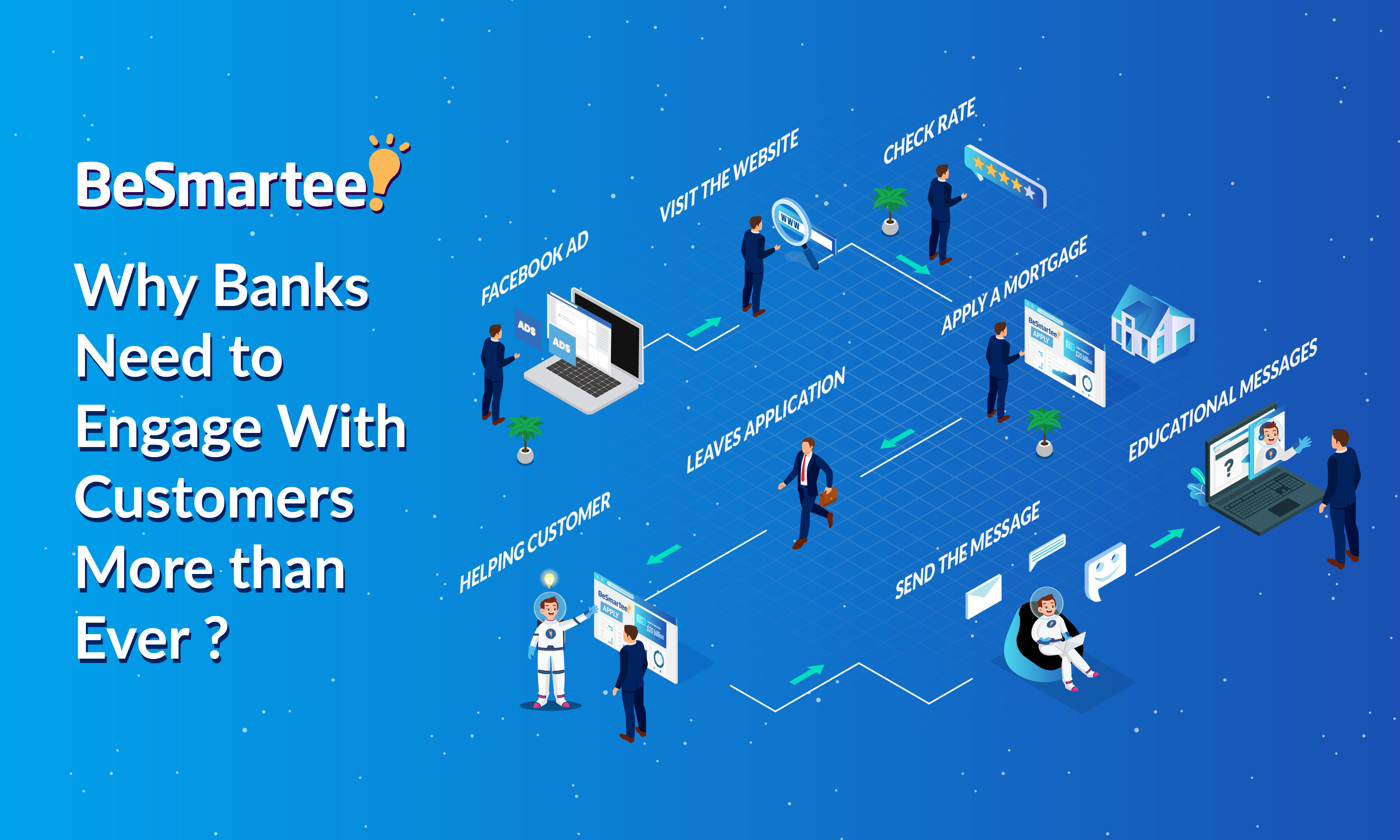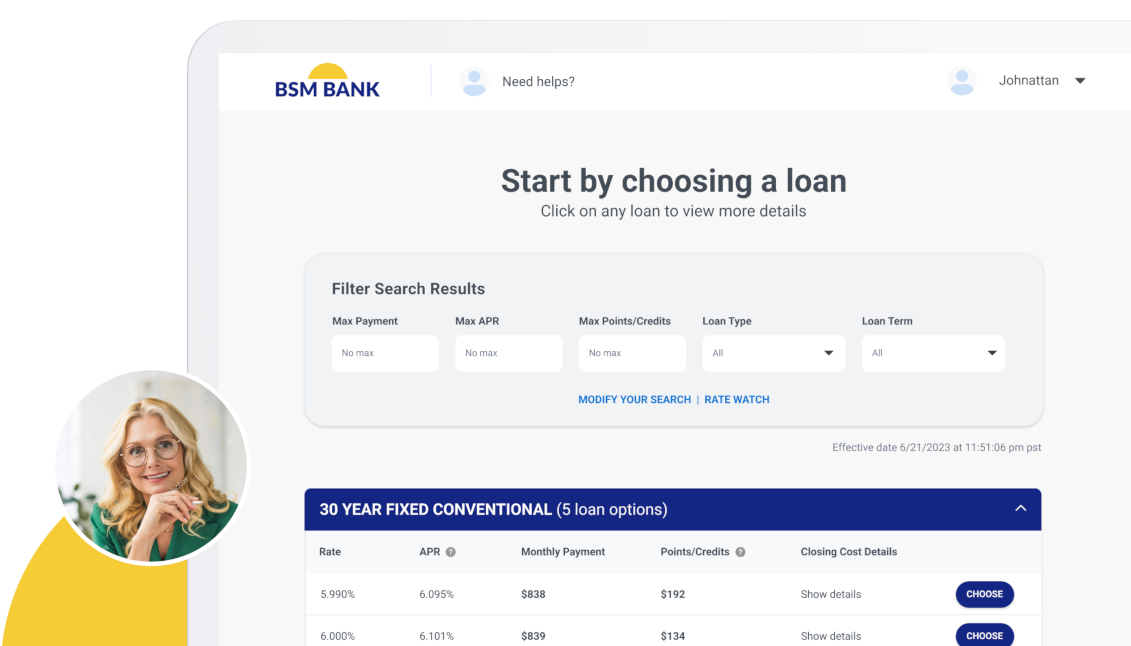Remember the time when you went on your first date, how you wanted to look your best? You were probably hyper-aware of your words and actions. You wanted to make a good first impression. Now, imagine someone shopping for a mortgage loan for the first time and they land on your website. What do they see? What impression do they first get from your brand?
Maybe the borrower just wants to search for rates before sharing any other information but, when they land on your website, they don’t see a way for them to check for rates so they leave. Maybe they want to know what fees are associated with a loan. If you don’t have any educational content covering your loan products and fees, they will most likely leave your site within seconds. These are just a few examples of how your customers engage with your brand.
So, what can you do? Your goal is to start understanding the customer’s journey so you can start moving to the world of customer experience.
Understanding Offline and Online Customer Experience
According to PWC, 54% of U.S customers say customer experience at most companies needs improvement. This is also true in mortgage lending. But what is customer engagement anyway? Customer engagement is interaction between a customer and a company. The interaction can be both online or offline.
Offline Engagement
Offline engagement is interaction that takes place when someone walks to a local branch or when someone is calling your call center to ask for more information about a mortgage. Other types of offline interactions include: commercials, billboards, print media, face to face, educational events and so on. As you can see, there are many ways customers interact with you offline and knowing those interactions will help you improve your customer experience.
Online Engagement
Online engagement is any interaction online. This can be someone coming to your site, social media platforms, YouTube videos, etc. There are many forms of online interaction that are unavoidable in today’s environment.
Take a look at Facebook. According to Statista, Facebook’s active users are at 2.5 billion, and that’s just one platform of social media. There are other platforms, like LinkedIn and Instagram, that are also very high in traffic. The opportunities to engage with customers on social media are endless, but you need to put action behind it. How do you do that?
What Can Lenders Do to Help with Customer Engagement?
Now that you understand how customer engagement happens online and offline, start documenting your interactions. To capture all your customers’ engagement, create a committee within your institution. The committee can be responsible for creating a strategy and executing on that customer engagement strategy. To get some ideas on where to start, let’s look at the following scenario.
Customer Engagement Scenario No. 1:
Susie already did all her research online and understands what it takes to get a mortgage loan. She has been looking at some lenders online but is not sure if she should apply with them. One day, she sees an ad on her Facebook that says, “if you need a mortgage loan, apply now.” Susie clicks on the ad and starts to complete the online application. At the end of the application, there is a message that says someone will get back to her.
How do you engage with a customer next? Do you have a loan originator call her or do you send her an email to set an appointment to talk to her?
As you can imagine, there are many ways institutions can interact with the customer online and offline. This is something you have to think about as a lender. If you don’t know this, then your mortgage loan originators are potentially losing business online.
So, how do you help your mortgage loan originators make a great impression?
First of all, anyone joining your institution should be getting trained on your processes and this includes your key values that you bring to your customers. After all, you want to make sure that every loan originator understands why you are different from everyone else so they can easily communicate this to the customer.
Customer Engagement Scenario No. 2
Imagine a customer coming into your branch and asking if they can qualify for a loan. Your mortgage loan originator starts to take their information without asking key questions such as,
- How much of a loan do they need?
- Have they found a property?
Let’s say that after the mortgage loan originator takes the application, the customer is rejected for the loan. What happens next? Does the loan originator simply say, “sorry you got rejected, good luck,” or “I am going to look into helping you get a mortgage loan. Let’s sit down and figure out how you can get approved next time?”
Ideas for Engagement:
- Invite your customer to an educational class if your bank offers this.
- Call your customers that you have not heard from in a while.
- Ask your customer to rate your service.
As you can see, knowing your customer engagement requires your team to really think about the customer engagement journey.
How Do You Define Your Customer Engagement Journey?
In order to understand the customer engagement journey, you need to understand your customer’s points of interaction. Start mapping your customer journey by using data that you currently have available and start plugging in all the information into the customer journey map.
The five stages of customer journey map are:
Subscribe to BeSmartee 's Digital Mortgage Blog to receive:
- Mortgage Industry Insights
- Security & Compliance Updates
- Q&A's Featuring Mortgage & Technology Experts
- Awareness: Awareness of your brand and products
- Consideration: Customer decide if they want to buy from you
- Purchase: Customer select to buy from you
- Service: Customer expectation based you their purchase
- Loyalty: Will they come back to you to get a loan again or refer you?
While trying to figure out your customer points of interaction, you can also figure out the points of failure in your process. For example, think about the questions customers ask themselves while searching for a mortgage loan.
Here are just a few questions customers may be asking themselves:
- How much can I qualify for?
- What type of credit do I need?
- Is there a down payment?
- Are there special mortgage options?
- What will my interest be?
- Do I have to pay mortgage insurance?
- How long does it take to close a loan?
- How much will come out-of-pocket?
- Which lenders have better loan options?
- Are there any penalties?
Again, being able to answer just some of this question on your website is important so that potential customers have the right information to make a better decision. Taking time to fully understand your customer and educate them on what you offer them is critical to building trust.
The benefits to creating your customer journey map are:
- Increasing your customer service rating
- Increasing your retention rate
- Identifying problems that can be resolved
Now let’s look at a example of a customer getting a mortgage loan
As you can see in the above example, a personal touch was part of the journey. Why? Because people want a personal experience. According to Epsilon’s research, 80% of consumers are more likely to make a purchase when brands offer personalized experiences. So, when you’re thinking about your customer engagement strategy, think about how you can make it personal.
Engagement and Personalization Vision
What does your customer engagement strategy look like? Are you using social media to engage? Or are you sending emails with updates and promotions? Creating a customer engagement strategy for your mortgage company should be part of your overall process. You want each customer to be engaged with your brand from the moment they enter your website. It can even be a chatbot or a live chat service, which some companies have.
Getting Personal: Tips Your Loan Originators Can Do To Increase Engagement
Although more and more customers prefer to complete an online application, there is still some human interaction needed along the way. This is where loan originators can offer a personal experience to clients to increase engagement. This is where loan originators can shine and take the extra time to care for the customer.
- Call people by their name. Why? Because people listen when their name is called.
- Personalize your messages. Send them personal messages on their special day. Don’t you love getting snail mail and birthday cards?
- Listen to the customer. Understand the needs of the customer and how you can help them.
- Ask questions. Learn about your customers by asking them questions and getting to know them.
- Create a profile. In your customer profile, you should include personal details about your customer that you discover during your conversation.
- Special promotions. Stay top-of-mind and send customers special promotions.
- Educate your customer. Customers want to be educated and they want to know you are there for them when they need you the most. Give them a heads up, have an actual conversation with them. Do a check-in call.
For banks, personalization will be a key to continue growing their business. Today’s population demands more engagement and banks have a wealth of knowledge they can pass on to customers.
Customer Engagement with Financial Technology (Fintech)
At BeSmartee, we have worked closely with banks to keep up with the changes of customer engagement. We understand that customers want to interact in many different ways.
How?
We have created our Mortgage Loan Originator (MLO) Command Center to give banks, credit unions and non-bank lenders a way to increase loan originator interaction with their clients, all in real-time. As we build our product enhancements, we understand that this is the future and banks who do not adapt, will fall behind.
Here are some ways our lenders interact with their customer using the BeSmartee Mortgage POS:
- Monitor the progress and overall experience of your borrowers
- Guide borrowers by taking over or assisting with the application
- Engage with borrowers via chat, email, etc.
- Send borrowers products and comparisons
- Co-browse with borrowers
- Collect documentation
- Provide status
- Provide verifications
- Invite realtors
Why Should You Care?
Financial technology continues to evolve in the mortgage industry. For example, banks with legacy systems will need to adapt to new technology. Mortgage industry professionals recognize the importance of this, especially now during the pandemic. Early adopters of technology have been successful during this time, as they’ve been able to take more applications during a low interest environment. These banks are already thinking about the next innovation along with their mortgage POS provider.
Final Thoughts
Banks know that technology is no longer an option but a necessity. As they look internally to review their core processes, they’ve started to realize that an investment in technology will pay dividends in the long run, as more and more people adopt new technologies. Banks who don’t move fast will begin losing business to their competitors.
What are you doing today to stay in the game?
Get updates from BeSmartee sent directly to your inbox! Subscribe to our newsletter here.




